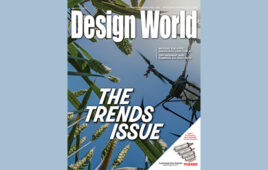Expanding the reach of digital twins
It’s incredible to think about how much engineering has changed, and continues to change, in the 25 years since I received my degree. Large and small steps forward each year in everything from CAD to 3D printing have bettered the manufacturing world and improved how we design for it.
I’ve been familiar with the concept of digital twins for quite a while, but a recent chat with Siemens’ Eric Kaczor showed me how much this technology is poised to take over what we do in design. Not only will it help through the entire manufacturing process, but the feedback and analysis gained can help designers solve problems more thoroughly.
In an industry like packaging, there are ways to better serve customers, who are always pushing for faster production times. You can make your assembly line run faster, but you can only achieve so many efficiencies. Eventually, getting better is going to involve digital innovation across the entire product life cycle.
Kaczor highlighted three types of digital twins that his company is focusing on: products, packaging and the actual production processes.
“We can create a digital twin of a product. That’s designing the product formulation, keeping track of your formulations, keeping track of the information from your customers and what they’re requiring for their requirements of the product,” he said. But digital twins can also be used on the packaging side. Consumer tastes require constant innovation and changes in packaging, so this is a key area that requires developing and refining new designs.
“Some of the major beverage companies recently switched to a different type of can and bottle. Maybe that started from CAD. You can have a perfect representation of that in the digital world for simulations. It’s even to the point of figuring out how a can or a bottle crushes down,” he said. “Instead of actually producing one, use a perfect representation in the digital world. Now you can do all those simulations before you actually manufacture one can or bottle.”
Lastly, said Kaczor, is the digital twin of the production process. Consider a customer who brews beer. They have their brewing lines, raw materials being brought in, and they have to fill and label and palletize. He explained that all of that can be set up in a digital twin, so the customer can simulate the whole production line from beginning to end.
“They can figure out how things move through their plant, where the bottlenecks are. They can fix those bottlenecks in the digital world before they see they have issues in the real world,” he said.
The result of all of this is better performance. Plus, once everything is up and running in that real world, there’s plenty of data to gather — data on all the production processes, how they’re running, the temperatures of the motors, whether there are vibrations, etc. And this, Kaczor said, is another key.
“You can analyze these data from one machine, an entire production facility, or multiple facilities. You can even gather data from your actual products as they go out into the field. Think about car manufacturers. In my car, I get an email before something fails,” he said. “On the manufacturing floor, we’re collecting data about the real product and the real production. And if you can analyze that, you can make business decisions on how to bring all that insight back to the beginning of the design process.”
Paul J. Heney – VP, Editorial Director
[email protected]
Filed Under: DIGITAL ISSUES • DESIGN WORLD




